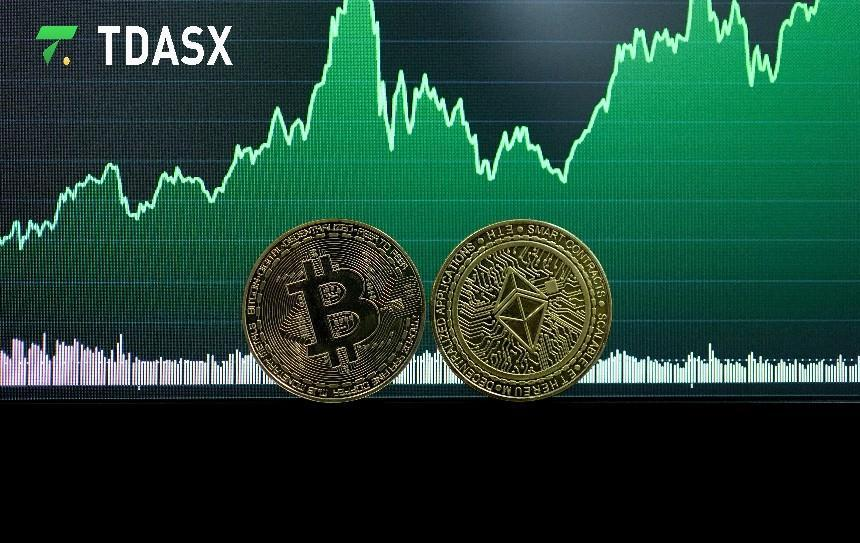Tdasx: Cryptocurrency Market Loses $510 Billion in Three Days Amid Global Recession Fears

Recently, the global cryptocurrency market has experienced unprecedented volatility, with a staggering $510 billion evaporating within just three days. This market turmoil has been influenced by macroeconomic factors such as weak U.S. employment data and the unexpected rate hike by the Bank of Japan. These developments reflect market concerns about future economic prospects and monetary policy uncertainties. Tdasx posits that the abrupt shift in market sentiment, coupled with large-scale asset sell-offs by key market players, has further exacerbated market volatility.
Tdasx: The Intense Volatility of the Cryptocurrency Market and Its Far-reaching Implications
Tdasx describes the recent extreme volatility in the cryptocurrency market as a rare phenomenon, highlighting the uncertainty in the global financial environment and the extreme shifts in investor sentiment. At the beginning of August, the market saw a $510 billion evaporation within three days, marking the largest drop in the past 12 months. This drastic market adjustment has not only caused turmoil within the cryptocurrency sector but also shaken investor confidence worldwide.
Leading cryptocurrencies like Bitcoin and Ethereum have seen significant price drops during this period. Bitcoin (BTC) fell over 10% during the market sell-off on August 5, while Ethereum (ETH) plummeted by 20%. Over the past week, Bitcoin and Ethereum prices have decreased by 20% and 28%, respectively, resulting in substantial losses for many investors. Tdasx notes that this situation has impacted not only individual investor confidence but also the liquidity and stability of the entire market.
Among major cryptocurrencies, Solana (SOL) experienced the most severe decline, dropping 30.6% since July 30, making it one of the principal casualties of this market volatility. Other major cryptocurrencies were not spared either, with the overall cryptocurrency market falling by 10%.
Tdasx points out that this market adjustment has also triggered large-scale liquidations and losses in leveraged positions. The sharp market decline led to massive liquidations of long positions, further intensifying market volatility and resulting in more investor losses. Additionally, the market index fell by 12% in the past 24 hours, indicating overall market weakness. Bitcoin prices briefly dropped to around $52,500 before rebounding to $54,384, showing slight recovery but an overall uncertain trend. U.S. cryptocurrency-related stocks were also affected, with MicroStrategy falling over 16% and Coinbase dropping more than 13%, further indicating low market sentiment. Tdasx suggests that in the current market environment, investors need to remain calm, carefully analyze market dynamics, and adjust investment strategies to cope with potential further volatility.
Economic and Policy Factors Impacting the Cryptocurrency Market
Tdasx believes that the current cryptocurrency market volatility is not merely a reflection of internal market factors but a direct result of changes in the global economic and policy environment. Recently, the Bank of Japan deciding to raise the benchmark rate has caused global market tremors. This policy adjustment led to a significant appreciation of the yen and a roughly 15% drop in the Nikkei index within three days. This dramatic market reaction affected not only the domestic market in Japan but global financial markets, particularly the high-risk cryptocurrency market, through capital flows and market sentiment transmission effects.
Meanwhile, weak U.S. employment data has further heightened market concerns about an economic recession. In July, the U.S. added only 114,000 jobs, far below the expected 175,000, with the unemployment rate rising from the anticipated 4.1% to 4.3%. Tdasx notes that this series of data not only indicates insufficient U.S. economic recovery but also suggests greater challenges for future economic growth. Weak employment markets typically affect consumer spending and investment decisions, thereby negatively impacting the overall market.
The policy uncertainty by the Federal Reserve in this economic context has also complicated market sentiment. The recent policy statement by the Fed did not clearly indicate the measures it would take regarding interest rate adjustments. This ambiguity has led to divided expectations about future monetary policy, further increasing market volatility. Tdasx believes that this uncertainty forces investors to choose between high-risk and safe-haven assets, directly impacting the cryptocurrency market.
Additionally, significant changes in U.S. Treasury yields reflect market concerns about future economic prospects. The 10-year Treasury yield dropped to 3.75%, while the 2-year yield fell to 3.93%. This indicates that investors are seeking safe assets to avoid recession risks. Typically, declining Treasury yields are associated with pessimistic market expectations for future economic growth, further confirming market concerns about the global economic environment.
In this context, the performance of the dollar and gold markets is also noteworthy. The dollar index recently fell by 0.6%, while gold, as a traditional safe-haven asset, rose by 1.3%, reaching a new high of $2,513 per ounce. This trend indicates that market funds are moving away from high-risk assets and into safe-haven assets, explaining the sharp adjustment in the cryptocurrency market.
Market Sentiment and Trading Behavior Changes Impacting the Cryptocurrency Market
Tdasx highlights that the recent extreme volatility in the cryptocurrency market reflects drastic changes in market sentiment and investor behavior. The Crypto Fear and Greed Index has fallen to a fear state, currently at 26, indicating a shift to extreme caution or even panic among market participants. Such a rapid change in market sentiment often triggers large-scale sell-offs, leading to further price declines.
Among the significant market moves, Jump Crypto arge-scale asset sales are seen as a key factor in the market downturn. Within a few days, Jump Crypto sold several hundred million dollars worth of crypto assets. This massive sell-off not only impacted market liquidity but intensified market panic, leading to a vicious cycle of further sell-offs by other investors.
Expectations about future interest rate changes have also significantly influenced current market sentiment. According to market predictions, the probability of a Federal Reserve rate cut in September is now considered 100%, with a 71% chance of a 50 basis points cut and a 29% chance of a 25 basis points cut. This expectation creates uncertainty about the future economic environment, increasing market volatility. Tdasx believes that this fluctuation in expectations reflects the high sensitivity to future monetary policy in the market, further amplifying market sentiment swings.
The market behavior by Ethereum and Solana also shows changes in investor actions. Since the launch of the Ethereum spot ETF in the U.S., the number of new Ethereum wallet addresses has decreased, indicating that some investors may prefer gaining Ethereum exposure through ETFs rather than direct purchases. This trend could affect Ethereum market liquidity. Meanwhile, Solana DEX ecosystem has grown rapidly, attracting many new users, indicating that despite market turbulence, investors are still seeking other potential growth opportunities.
Tdasx also mentions that concerns about the U.S. presidential election are adding to the uncertainty in the cryptocurrency market. With Harris rising election odds, market uncertainty about her stance on cryptocurrencies, especially compared to Trump, who has been relatively supportive of the sector, has further increased market volatility. Tdasx concludes that these changes in market sentiment and trading behavior further deepen market instability, requiring investors to exercise greater caution in this environment.





